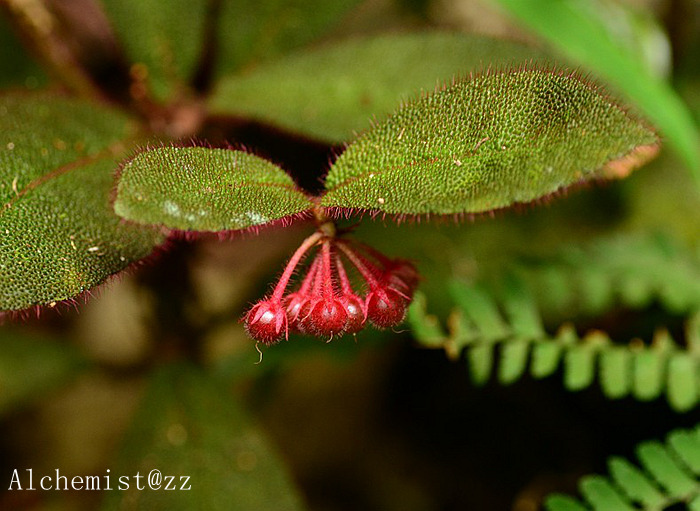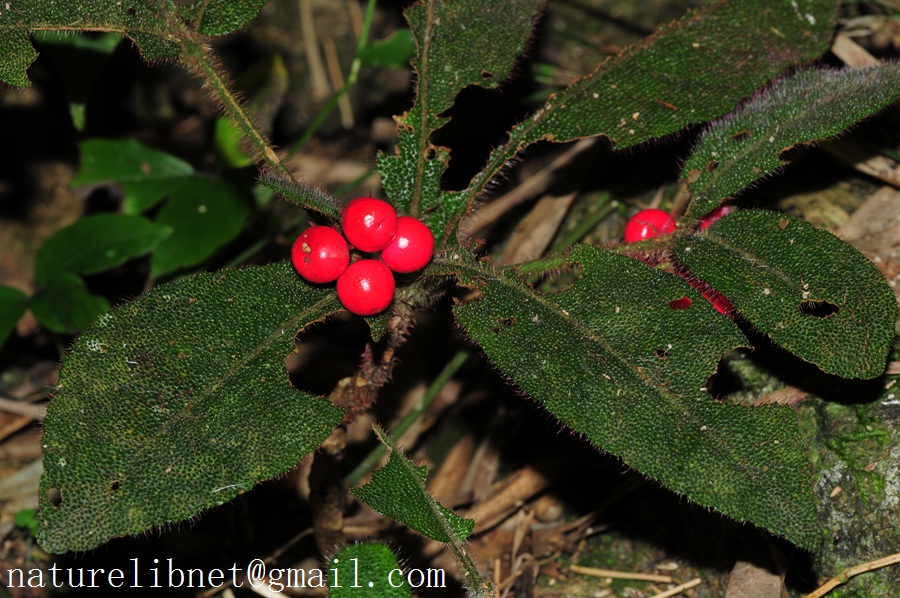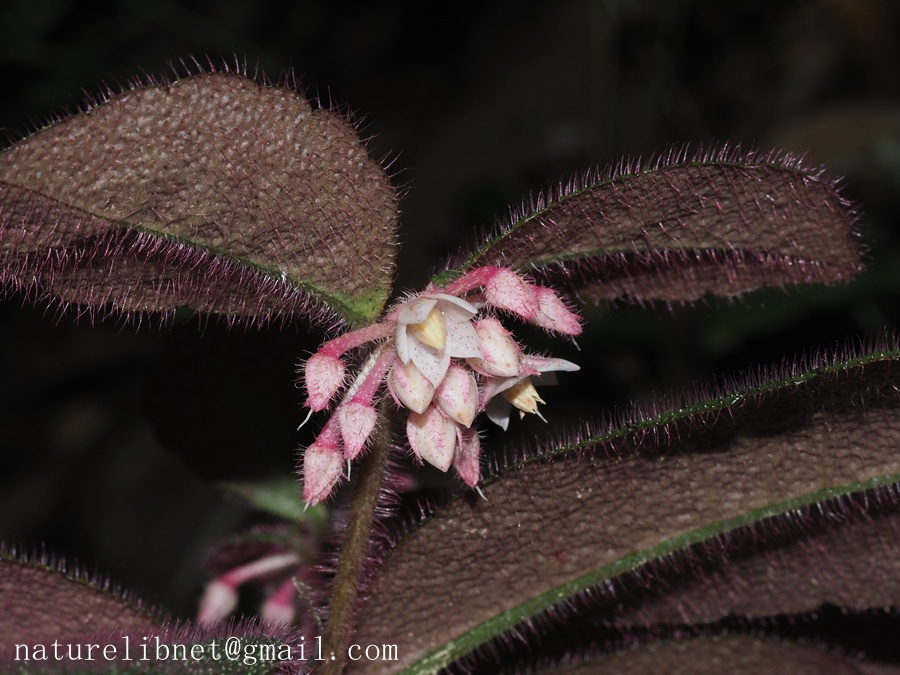虎舌红 Ardisia mamillata
- Scientific Name: Ardisia mamillata Hance
- Ref: J. Bot. 22:290. 1884
- Synonym: Tinus mamillata (Hance) Kuntze
- Chinese Common Name: 虎舌红 hǔshéhóng
- Family: Primulaceae
- Subfamily: Mysinoideae
- Genus: Ardisia
- Type: Canton(广东),Lo-fau-shan(罗浮山), Wong-lung-kun, 1883-08, C. Ford s.n.[Herb. Hance n. 22239](Holotype:BM)
- Distribution: Dense evergreen broad-leaved forests, valleys, shady damp places; 500-1600 m. Fujian, Guangdong, Guangxi, Guizhou, Hainan, Hunan, Sichuan, Yunnan [Vietnam]
- Photo: 02/15/2013, Conghua, Guangdong
Subshrubs to 15 cm tall, with creeping woody rhizomes. Stems densely rusty crisped-pilose when young, glabrescent. Petiole 0.5-1.5 cm; leaf blade oblong-oblanceolate to obovate, 7-14 × 3-4(-5) cm, papery, punctate, rusty strigose and mamillate adaxially, crisped hairy abaxially, base obtuse or rounded, margin obscurely crenate with marginal glands hidden by hairs, apex acute or obtuse; lateral veins 6-8 on each side of midrib, marginal vein absent. Inflorescences simple, umbellate, 10-15-flowered, densely pilose, on curved ends of pilose, specialized branches 3-9 cm, with 1 or 2(-4) reduced subapical leaves. Flowers pinkish or rarely whitish, 5-7 mm. Pedicel 4-8 mm; pilose. Sepals narrowly oblong-lanceolate or lanceolate, as long as or shorter than petals, punctate, pilose on both surfaces or glabrescent inside, apex acuminate. Petals ovate, punctate, apex acute. Stamens subequalling petals; anthers lanceolate, punctate dorsally, acute. Ovary pilose or glabrescent; ovules ca. 5, uniseriate. Fruit reddish, ca. 6 mm in diam., slightly fleshy, ± punctate, pilose or glabrescent. Fl. Jun-Jul, fr. Nov-Jan. (Flora of China)

10/06/2013, Huaping, Guangxi

